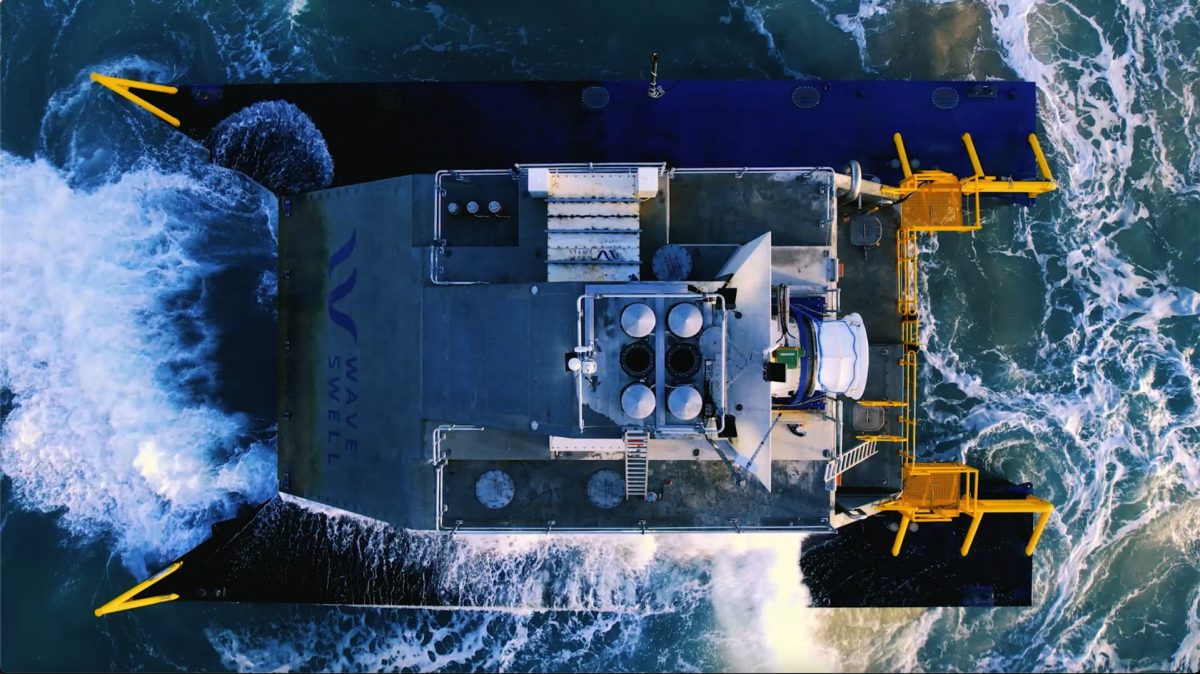
An Australian wave-energy project featuring significant contributions from SOTO highlights that collaboration is vital when it comes to innovation.
For engineers, an awards night-of-nights doesn’t come much bigger than the Engineers Australia Excellence Awards. Held recently in Sydney, the awards recognise outstanding engineers who show innovation and resourcefulness in their work, top engineering projects, and the teams behind them.
A coveted prize is the Sir William Hudson Award, the highest accolade an engineering project can receive from Engineers Australia. This year’s Sir William Hudson Award winner was Wave Swell Energy’s (WSE) 200kW wave energy converter (WEC).
Called the UniWave200, the WEC has demonstrated during its lengthy trial period that the technology can effectively generate energy and supply the grid. Officially, the concept has been tried, tested, and proven. Now it’s being decommissioned to make way for a larger and more scalable version of the generator, possibly at multiple sites worldwide.
Getting it to this point is a cause for celebration for WSE. The Sir William Hudson Award is a fitting tribute to the project. SOTO has been part of that journey, and WSE’s Chief Technology Officer acknowledges the role many contributors played in making the concept a demonstrated reality.
“To begin with, SOTO primarily looked after the turbine. They also looked after other components, auxiliary pieces, and in the end, the real value they provided was that they were a turnkey solution for us.”
“They did not only the design engineering, documentation, quality control and so on, they also managed the manufacturing. They were able to lead that, which was huge for us. Remember, this was also during the height of COVID-19 when I couldn’t get to Wollongong to look at the turbine.”
The ingenuity behind UniWave’s design is that more complex moving parts are above the waterline, reducing wear and maintenance issues. The technology is based on the concept of a blowhole, where the generator captures waves in the chamber, forcing air upwards, which then spins a turbine to produce energy. A single-direction turbine rotation reduces complexity and improves reliability.
Mr Hunter said finding a suitable turbine was a challenge that SOTO helped to solve.
“There’s nothing off-the-shelf for any part of our system,” Mr Hunter said. “The main turbine design work was done in the US, but we found that the design involved manufacturing processes we couldn’t achieve in Australia. “SOTO took that design and reconfigured it so it could be built, and they got it built based on the best way of doing it in Australia. The biggest benefit for us working with SOTO was that they crossed over disciplines. Engineering design and production are usually quite separate, but they could cover the whole process, differentiating them from anyone else.”
“SOTO took that design and reconfigured it so it could be built, and they got it built based on the best way of doing it in Australia. The biggest benefit for us working with SOTO was that they crossed over disciplines. Engineering design and production are usually quite separate, but they could cover the whole process, differentiating them from anyone else.”
Clearly, WSE has demonstrated the potential of wave energy, and how to collaborate on design, construction, and operation. A CSIRO report concluded that wave energy could contribute up to 11% of Australia’s energy (enough to power a city the size of Melbourne) by 2050, making it a strong contender in Australia’s renewable energy mix.
The Engineers Australia citation noted that “the significance of the UniWave 200 lies in its ability to scale up or down depending on the energy needs of the local community but also to provide coastal erosion protection. These factors (rural/remote electrification and erosion prevention) are vital when considering a region such as the South Pacific, where many islands struggle with a lack of access to renewable (or indeed any) energy sources and grapple with the impacts of climate change and consequent rising sea levels.”


